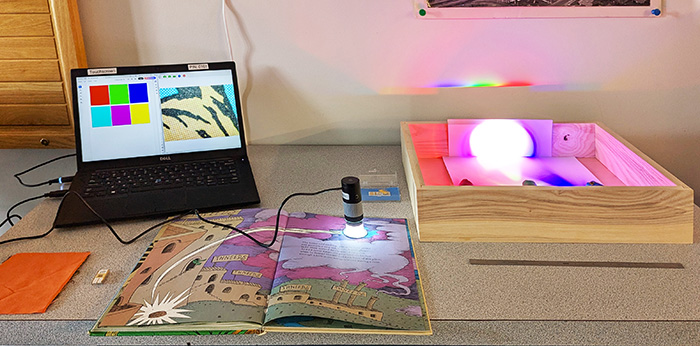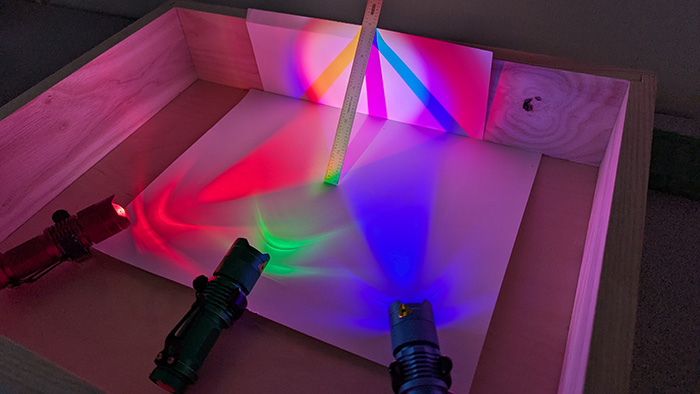This exhibit consists of a portion of our LCD and Color Lab that we utilize for our STEM events.

The lab consists of two separate demonstrations. On the right is our light box consisting of a red, green, and blue LED flashlight. As can be seen on the above photo, the addition of these three lights generates white light, demonstrating the additive primary colors of red, green, and blue. Other combinations such as red and green will show a resultant yellow.
What's interesting is that when all three beams are blocked with the scale, the complementary colors yellow, magenta, and cyan remain in the shadows from the scale.

The exhibit on the left is a 250X microscope for looking at the differences between the macro and micro world of color. The left image on the laptop are six color squares. The right image on the laptop shows the microscope image. The microscope is on a Doctor Seuss book and shows half toning of printed color.
The microscope can be used to show the laptop LCD subpixels and the top three squares show single color subpixels of red, green, and blue. However, when the microscope is used to look at the bottom three color squares for example, the micro view shows red and green subpixels in the yellow box as shown in this photo.
![]()
If the cyan box is examined, blue and green subpixels are seen and blue and red subpixels make up the magenta box.
We often combine this demonstration with our LED lab when doing a school STEM event. We also show various different items under the microscope to explore the micro world. This consists of different items such as integrated circuits showing the die and bond wires, and various different patches of fabric. When done with students, they often will look at the texture and color of their clothes and often will explore their hair.
